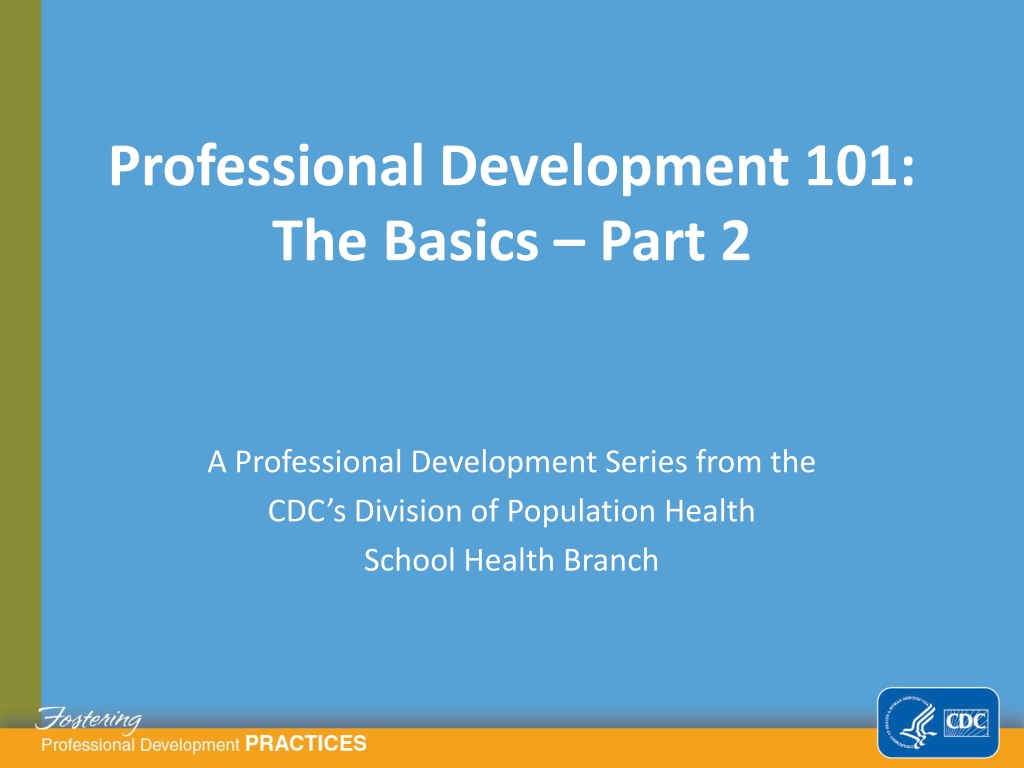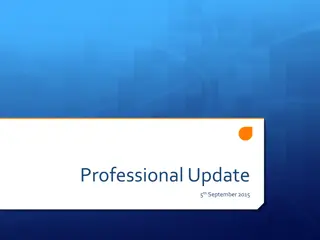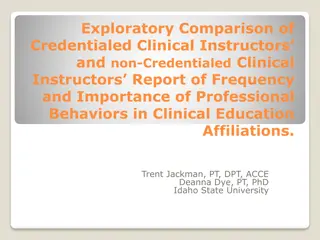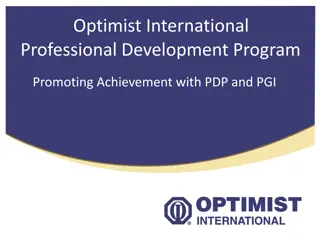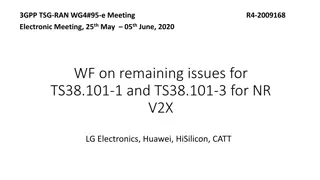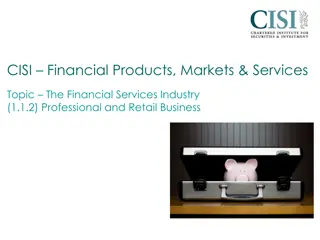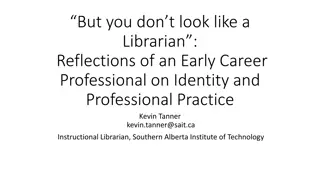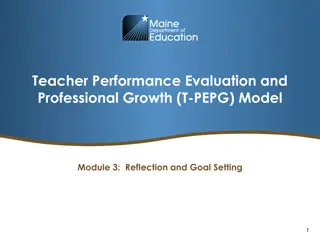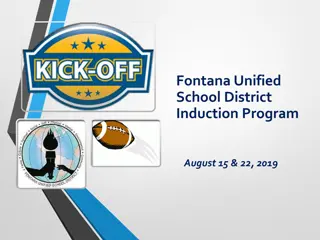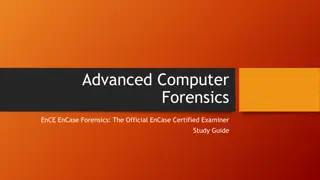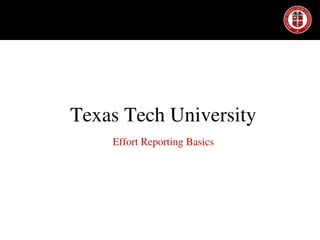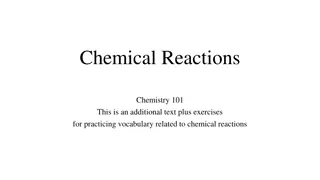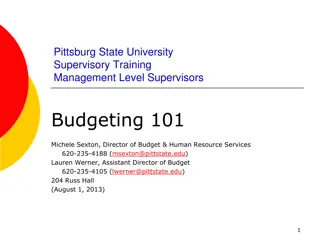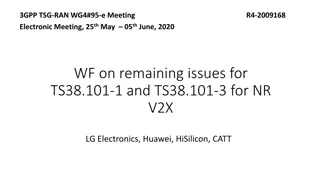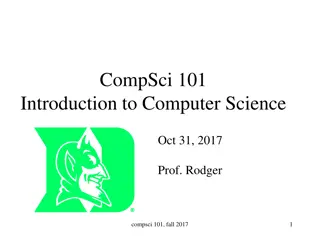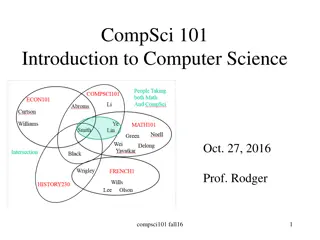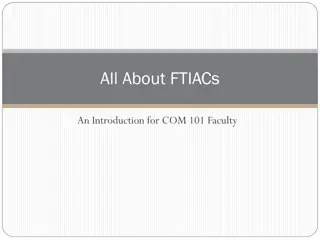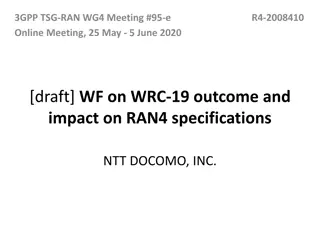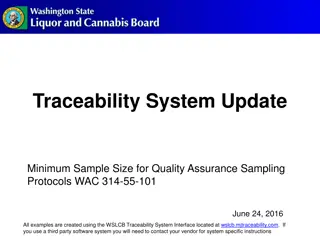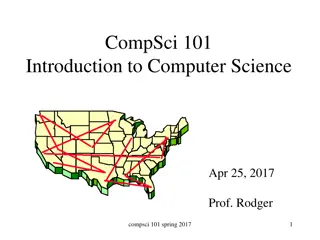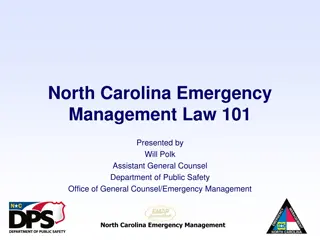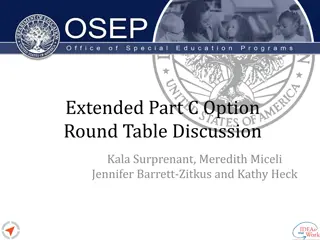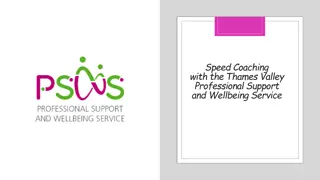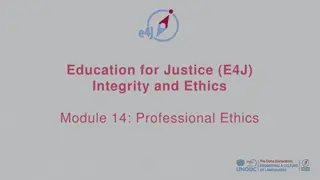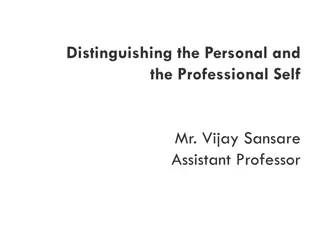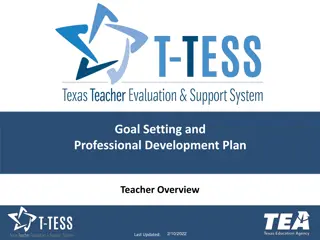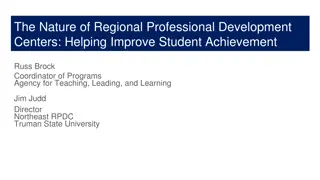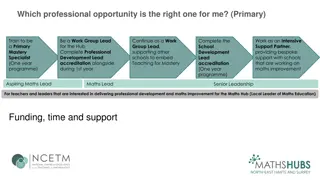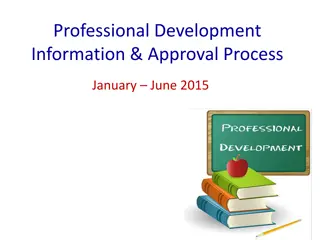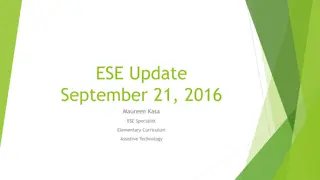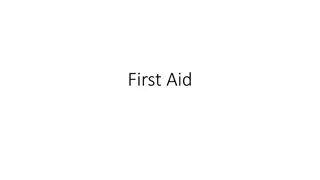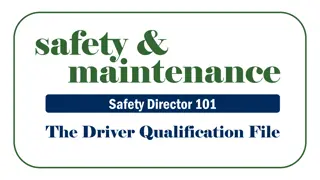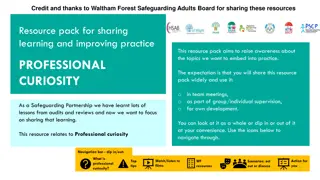Professional Development 101: The Basics Part 2
This professional development series by the CDC's Division of Population Health School Health Branch delves into key practices and strategies to enhance education delivery and skill-building capacity. The content covers essential topics such as professional development practices, characteristics of effective use, and strategies for support. Through sections like introduction, delivering practice, and adult learning principles, readers gain insights into sustaining, designing, marketing, delivering, following up, and evaluating professional development services.
Download Presentation

Please find below an Image/Link to download the presentation.
The content on the website is provided AS IS for your information and personal use only. It may not be sold, licensed, or shared on other websites without obtaining consent from the author. Download presentation by click this link. If you encounter any issues during the download, it is possible that the publisher has removed the file from their server.
E N D
Presentation Transcript
Professional Development 101: The Basics Part 2 A Professional Development Series from the CDC s Division of Population Health School Health Branch
Section One: INTRODUCTION
Welcome Bridget Borgogna Health Education Specialist/Project Officer Melissa Fahrenbruch Team Lead, Program and Professional Development Team
Purpose Professional development practices strengthen education delivery and increase skill-building capacity.
Learning Objectives 1. Describe three professional development practices. 2. Describe characteristics of effective use. 3. Identify strategies to support each professional development practice.
Section Two: PROFESSIONAL DEVELOPMENT PRACTICES
Sustain, Design, Market Sustain a Professional Development Infrastructure Design Professional Development Offerings Market Professional Development Services
Section Three: DELIVER PRACTICE
Deliver Professional Development Execution phase Opportunity to impact learning and create change Delivered in a variety of ways
Adult Learning Principles Revisited Experience is respected and built upon Safe and supportive learning environment Opportunities to practice skills and apply new knowledge
Training Versus Facilitation Training Unknowns to knowns Pre-established objectives Specific set of skills or knowledge Facilitation Knowns to unknowns Work toward outcomes Open discussion in safe environment
Re-Energize and Engage Take a break Change the pace Move on
Team-Teaching or Co-Facilitating Clarify roles Agree on when and how to give feedback Develop communication signals Intervene when necessary Have open communication
Key Strategies 1. Provide an environment conducive to learning. 2. Use qualified professional development providers. 3. Collect evaluation data.
Learning Activity One: REVIEW OF DELIVER PRACTICE
Section Four: FOLLOW-UP PRACTICE
Provide Follow-Up Support Knowledge and skill levels become strengthened Planned during design phase Intentional
Follow-Up Support Plan Summary Detailed description of support activities Action plan Detailed timeline
Hypothetical 14-Month Plan Fourteen months Three months One year Ten months One month Two weeks E-mail Website Action plan E-mail Phone Letters interviews Tools
Key Strategies Groups: 1. Plan for follow-up support in the design phase. 2. Share expectations. 3. Provide support. Technical assistance: 1. Plan for follow-up support in the design phase. 2. Schedule follow-up support. 3. Provide intentional follow-up support.
Learning Activity Two: REVIEW OF FOLLOW-UP PRACTICE
Section Five: EVALUATE PRACTICE
Evaluate Professional Development Practices Systematically monitoring and evaluating professional development events Collecting data Using data to improve future efforts
Data Uses For future professional development planning To make revisions to technical assistance protocols To report success Collection methods Pre- and post-questionnaires Evaluation forms
Pre- and Post-Questionnaires Two questionnaires Pre-questionnaire on a set of items before training Post-questionnaire on same set of items using same rating scale at end of training Difference in responses represents effects of training
Retrospective Method One questionnaire Assessment of before and after knowledge or skill level Completed at end of training Lessens the probability of bias
Guidelines for Design Use concise instructions Place the pre-training question first Format the questionnaire in a way that helps respondents
Evaluation Forms Quantitative responses Direct questions Qualitative responses Open-ended questions
Guidelines for Design Clear response options Standardized response categories and scales Avoidance of biased words, phrases, and jargon Response options linked to a single issue
Key Strategies 1. Develop plan. 2. Create evaluation instruments. 3. Collect data.
Learning Activity Three: REVIEW OF EVALUATE PRACTICE
Section Six: CONCLUSION
Summary of Professional Development Practices Sustain a PD infrastructure Design PD offerings Market PD services Deliver PD offerings Follow up with support Evaluate PD processes
Professional Development 201: From Basic to Dynamic Adult learning principles Facilitation tips Webinar development
Real-World Application: PRACTICES TO IMPLEMENT
Conclusion Thank you for your participation in Professional Development 101: The Basics
Evaluation Please let us know what you thought! https://orausurvey.orau.org/n/PD101b.aspx We value your feedback.
Certificate of Completion Download your Certificate of Completion now.
